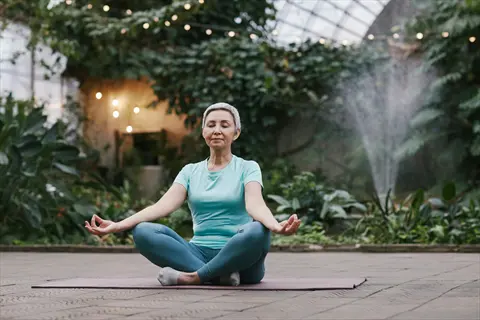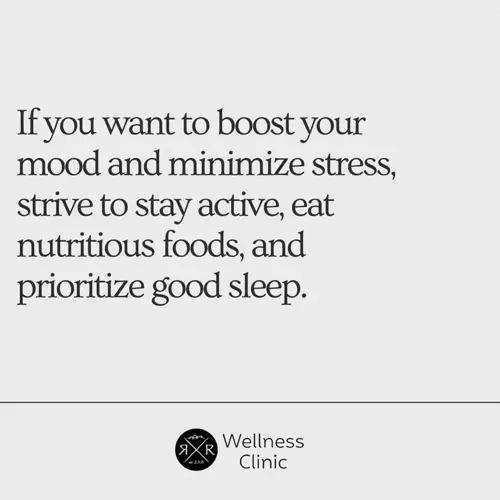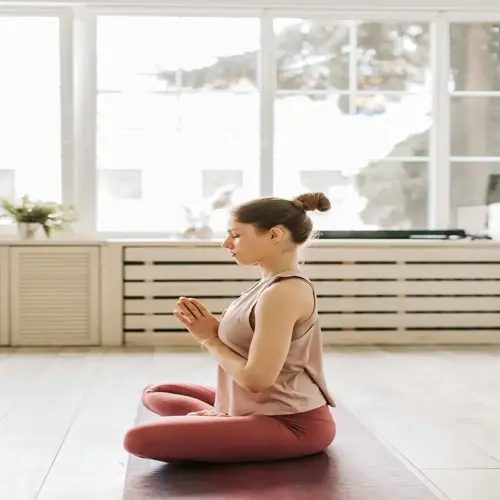10 Essential Self Care Tips for Wellbeing

Written by
Gina Mason
Reviewed by
Prof. William Dalton, Ph.D.Consistent sleep optimization and hydration habits are baseline self-care tips.
Digital boundaries and movement breaks allow mental clarity throughout the busy workday.
Habit stacking is a strategy that supports the self-care habit by utilizing existing habits to create new habits with more consistent sustainability.
Free 60-second resets, like box breathing, are instantly effective for stress reduction.
Personalized self-care habits are more effective than universal, standardized self-care habits for preventing burnout.
Building your non-negotiable self-care habits will support your physical health and emotional resilience, long-term.
Article Navigation
Let's delve into some of the essential self-care tips given by WHO's framework in five specific categories: physical health, emotional balance, mental clarity and focus, social contact and nourishment of spirit. Self-care is essential for everyone's daily well-being program and is not optional.
Many people erroneously view self-care as extravagant pampering. However, research indicates that consistent self-care will ward off burnout and facilitate resilience. These practices effectively manage stress and reduce cortisol levels over time.
The ten core strategies we are going to consider are supported by research. They are tangible ways to enrich your daily life, beginning today. The methods can work in concert, generating long-term well-being benefits in all domains of life.
10 Essential Self Care Tips
Consistent sleep cycles are important for maintaining energy. Sleep 7-9 hours every night at the same time, even on weekends. The room should be cool (60-67°F, 15-19°C) and dark (blackout shades). Maintaining this routine helps keep fatigue at bay and enables you to perform your daily tasks more effectively.
Hydration has a direct impact not only on physical health, but also on stress management. Drink at least 8 cups (2 liters) of water a day, using clear labels on bottles as reminders. Proper fluid intake helps support kidney function and mental clarity, which can naturally lowering cortisol levels.
Set strict digital boundaries to protect your mental space. Set defined times for checking emails and social media. I keep my cell phone out of the bedroom after 8 pm, establishing tech-free zones to have time for true self-care.
Evaluate your success using universally comprehensible units of measurement, transforming minutes to hours, ounces to grams, and Fahrenheit to Celsius. Eliminating hindrances and barriers to self-care recommendations by employing units of measurement that everyone can understand worldwide is a way to make the path to wellbeing easier to practice and maintain.

Sleep Optimization
- Maintain consistent sleep schedule with fixed bedtime and wake time to regulate your body's internal circadian rhythm for better rest quality
- Create completely dark environment using blackout curtains or sleep mask to block disruptive light sources that inhibit melatonin production
- Keep room temperature between 60-67°F (15-19°C) to support natural body cooling process required for deep sleep restoration
- Establish screen-free buffer zone 90 minutes before bed to prevent blue light exposure from devices delaying sleep hormone release
- Develop relaxing pre-sleep ritual with activities like reading physical books or gentle stretching to signal transition from wakefulness
- Use white noise machines or earplugs to mask environmental disturbances that can fragment sleep cycles throughout nighttime hours

Hydration Focus
- Consume eight glasses daily totaling 64oz (1.9 liters) to maintain optimal cellular function and metabolic processes
- Infuse water naturally with cucumber slices, citrus fruits, or mint leaves to enhance taste without adding sugars
- Monitor hydration levels through urine color observation aiming for pale yellow indicator rather than dark concentrated shades
- Increase intake during activity adding 16oz (0.5 liters) per exercise hour to compensate for fluid loss through sweating
- Use tracking applications or marked water bottles with time indicators to maintain consistent consumption patterns
- Eat water-rich foods like watermelon and cucumbers which contribute approximately 20% of daily hydration requirements

Daily Movement
- Complete thirty minutes activity five days weekly to improve cardiovascular health and natural mood regulation
- Perform desk stretches hourly during sedentary work targeting neck, shoulders, and wrists to prevent tension
- Integrate strength training twice weekly focusing on major muscle groups for bone density maintenance
- Take walking meetings instead of seated sessions to increase step count while maintaining productivity
- Practice posture correction by aligning ears over shoulders and hips to reduce spinal compression during activities
- Monitor daily step goals using fitness trackers aiming for ten thousand steps for health maintenance

Digital Boundaries
- Implement screen-free meals by storing devices away during eating to encourage mindful consumption
- Set application time limits using phone features restricting social media to specific daytime windows
- Customize notification settings disabling non-essential alerts to minimize distractions during working hours
- Establish digital sunset two hours before bedtime removing devices to support melatonin production
- Create tech-free zones in bedrooms and dining areas to preserve relaxation and interaction spaces
- Schedule weekly detox periods lasting 24 hours to reset attention capacity and reduce dependency

Nutrient Awareness
- Prioritize whole foods selecting colorful fruits and vegetables providing diverse phytonutrients
- Practice mindful eating chewing thoroughly and eliminating distractions to improve digestion
- Prepare weekly meal components ensuring access to nutritious options during busy work periods
- Balance macronutrients incorporating proteins, carbohydrates, and healthy fats in each meal
- Schedule consistent meal times avoiding fasting periods exceeding five hours while awake
- Use smaller plates to naturally control portion sizes without calorie counting

Gratitude Practice
- Maintain daily gratitude journal listing three specific appreciations each morning for mindset foundation
- Write handwritten notes to loved ones weekly strengthening relationships through recognition
- Practice positive reframing transforming challenges into learning opportunities during setbacks
- Share gratitude moments during family meals to create shared positive reflection habits
- Create visual reminders using photos or objects placed in frequented locations
- Implement gratitude meditation focusing on sensory experiences during quiet time periods

Breathwork Techniques
- Master 4-7-8 method inhaling four seconds, holding seven, exhaling eight to activate relaxation
- Practice alternate-nostril breathing to balance nervous system functioning and energy flow
- Perform morning oxygen boost through thirty deep belly breaths upon waking for circulation
- Use box breathing with equal four-second phases for stress management during pressure
- Integrate humming breath creating vibrational resonance to stimulate vagus nerve effects
- Combine with movement synchronizing inhalation and exhalation with stretching motions

Authentic Connections
- Develop active listening maintaining eye contact and paraphrasing to demonstrate understanding
- Practice vulnerability sharing appropriate experiences to deepen relational intimacy
- Schedule quality time without digital distractions for undivided attention during interactions
- Establish weekly rituals like shared meals to maintain consistent nurturing practices
- Create depth prompts moving beyond surface topics to meaningful value discussions
- Implement appreciation expressions verbally acknowledging qualities during communication

Sanctuary Creation
- Implement decluttering systems removing unnecessary items to create calming environments
- Integrate air-purifying plants like snake plants to improve indoor air quality naturally
- Design sensory corners with comfortable seating and calming colors for stress reduction
- Maximize natural light opening curtains and using full-spectrum bulbs where limited
- Create technology-free zones preserving areas for relaxation and non-digital activities
- Use calming palettes with soft blues or greens to promote tranquility in rooms

Emotional Honoring
- Develop boundary-setting phrases like 'I prioritize my energy' for respectful communication
- Practice self-compassion mantras such as 'I accept myself as I am' during challenges
- Identify emotional needs through daily check-ins asking 'What do I need now?'
- Create permission slips allowing space for difficult emotions without suppression
- Establish therapy access researching sliding-scale options for professional support
- Implement feeling identification naming specific emotions to increase vocabulary
Holistic Wellbeing Framework
A comprehensive self-care routine has five interconnected pillars. These include physical health, emotional balance, mental clarity, social connections, and spiritual nourishment. They work together like parts of a wheel. Losing one of them affects the others in your daily well-being journey.
Your physical health has an impact on your emotional well-being. For example, if I eat well and consume 50% vegetables, my moods become more balanced. Combine morning walks with gratitude exercises. Movement has benefits, but mindfulness techniques also help reduce stress and increase both physical and mental energy.
Meditation or spiritual techniques can unexpectedly bring mental clarity. Ten minutes of controlled breathing provides mental lustre superior to coffee consumption. I associate this with walking in nature, thus getting three benefits. These actions, associated, reduce the excretion of hormones responsible for mental fears, which is refreshing to one's viewpoint.
Try stacking tasks while doing regular activities. Engage in conversation with friends while walking to combine social and physical needs. Journal after your meditation to link your spiritual work with your emotional work. All these techniques of integration make taking care of yourself whole and possible at all times, even in a busy life, because you don't have to take extra time for them.
Physical Pillar
- Sleep hygiene protocols: Maintain 60-67°F (15-19°C) bedroom temperature with blackout curtains
- Nutritional foundations: Balance macronutrients with 50% vegetables per meal plate
- Movement integration: Complete 150 minutes weekly moderate activity like brisk walking
- Restorative practices: Implement contrast hydrotherapy ending showers with 30-second cold bursts
Emotional Pillar
- Journaling systems: Complete daily stream-of-consciousness writing for 10 minutes minimum
- Boundary frameworks: Practice 'no' scripts for unreasonable requests to preserve energy
- Self-compassion tools: Replace self-criticism with kindness mantras during challenges
- Cathartic release: Schedule weekly emotional expression sessions through art or movement
Mental Pillar
- Mindfulness protocols: Perform hourly 60-second breath awareness checks during work
- Cognitive nourishment: Learn new skills through free online platforms weekly
- Creative expression: Engage in art therapy like coloring or pottery biweekly
- Information filtration: Limit news consumption to 20 minutes daily maximum
Social Pillar
- Quality time blueprints: Conduct device-free dinners four times weekly minimum
- Community building: Join local volunteer groups meeting twice monthly
- Digital detoxing: Implement 24-hour social media breaks every Sunday
- Reciprocity checks: Evaluate relationships quarterly for balanced give-and-take
Spiritual Pillar
- Meditation variations: Practice 10-minute guided sessions every morning
- Nature immersion: Spend 30 minutes daily outdoors in green spaces
- Gratitude engineering: List three specific appreciations before bedtime
- Purpose exploration: Align activities with core values through monthly audits
Quick Reset Strategies
Explore potent stress relief techniques that take less than 5 minutes. Try box breathing for instant relaxation: inhale for 4 counts, hold for 4 counts, exhale for 4 counts. This simple technique can have a noticeable effect on your pulse and blood pressure, within a few moments. It requires no equipment. Only your full and complete attention.
Utilize sensory techniques to facilitate rapid mood shifts during busy workdays. Smell peppermint oil from wrists; take three deep breaths. The cool feels beautiful and inspires alertness while reducing stress. Splash your face with cold water to rapidly reset your nervous system.
All of these strategies utilize everyday items you already have. Humming stimulates the vagus nerve, triggering a natural calming response. Massage a textured stone while examining its surface details. They are easily accessible tools that you can use with a busy schedule without any preparation.
Consistent practice brings measurable physiological health benefits. Regular breathwork develops circulation and reduces the risks of hypertension. Sensory resets equilibrate cortisol, avoiding damage from chronic stress. These micro-practices support health throughout the day, even in times of difficulty.
60-Second Resets
- Box breathing: Inhale 4 seconds, hold 4, exhale 4, pause 4 - repeat 5 cycles
- Power posing: Stand tall with hands on hips for 2 minutes to boost confidence hormones
- Acupressure points: Press between thumb and index finger for 30 seconds per hand
- Progressive relaxation: Tense and release muscle groups from toes to head systematically
Sensory Rebooting
- Peppermint oil inhalation: Place 2 drops on wrists, inhale deeply 3 times for alertness
- Cold water face splash: Submerge face 10 seconds in 55°F (13°C) water to lower heart rate
- Humming vibrations: Sustain 'om' sound for 30 seconds to stimulate vagus nerve calming
- Textured object focus: Rub worry stone or textured surface for 60 seconds to ground attention
Mood Shifters
- Uplifting playlists: Create 3-minute song collections with 120+ BPM tempos for energy boost
- Comedy clip libraries: Watch 90-second funny videos to trigger natural laughter response
- Memory lane photos: Scroll positive memory album for 2 minutes to increase serotonin
- Inspiration cards: Keep deck of motivational quotes for instant perspective adjustment
Micro-Movements
- Neck releases: Slowly tilt head side-to-side 10 times to relieve tension buildup
- Wrist circles: Rotate wrists clockwise/counter-clockwise 15 times each to prevent stiffness
- Seated spinal twists: Rotate torso gently 5 times per side while seated in chair
- Ankle alphabet: Trace A-Z with toes to improve circulation during sedentary periods
Environmental Tweaks
- Natural light exposure: Face windows for 3 minutes to regulate circadian rhythm hormones
- Essential oil diffusion: Use lavender or citrus scents for 5-minute aromatherapy sessions
- Clutter clearing: Remove 5 visible items from workspace to reduce cognitive overload
- Soundscape switching: Alternate between silence and nature sounds every 30 minutes
Sustainable Habit Integration
Habit stacking is layering self-care assignments over existing daily tasks and routines. One commissions physiological habits (activities) that are similar to existing habits, such as brushing one's teeth or drinking coffee in the morning. Once you've poured your morning coffee, you do two minutes of stretching. By linking self-care with automatic external behaviors, a habit will be formed that may become automatic and habitual.
Begin with micro-commitments that overcome resistance. Pledge to yourself two minutes of meditation rather than twenty. I started with one minute of deep breathing after lunch. These little starters generate momentum, so that larger commitments seem achievable later.
Generate accountability through social connections to increase consistency. Schedule weekly meetings with a friend to discuss progress. Join online communities where members can share their daily achievements. These systems turn personal goals into commitments that communicate to others the motivation to follow through.
Create environmental triggers that set you up for success in maintaining your physical health. Keep water bottles within reach on your desk to encourage hydration. Keep some workout shoes handy at the door to enable you to go for spontaneous walks. These visual cues reduce the potential for decision fatigue, allowing for healthy decision-making to become automatic.
Habit Stacking
- Anchor identification: Select existing daily routines like tooth-brushing as habit triggers
- Formula application: 'After [current habit], I will [new self-care action]' for automatic execution
- Complexity layering: Start with 2-minute versions before expanding to full routines
- Consistency tracking: Mark calendar for 21 consecutive days to establish neural pathways
Micro-Commitments
- Two-minute rule: Commit to starting habits for just 120 seconds to overcome activation energy
- Tiny habit recipes: Pair micro-actions with specific cues like 'after sitting, I will stretch once'
- Incremental scaling: Increase duration by 10% weekly after initial consistency achieved
- Failure buffers: Plan for missed days with predetermined make-up protocols
Accountability Systems
- Check-in partnerships: Schedule weekly 15-minute calls with habit buddy for progress reviews
- Social contracts: Publicly declare goals to social networks to leverage commitment devices
- Progress sharing: Post updates in dedicated groups with photo evidence of completed actions
- Digital trackers: Use habit apps with reminder notifications and streak counters
Environmental Triggers
- Visual cue placement: Position yoga mat beside bed for morning routine visibility
- Habit-trigger objects: Keep water bottle on desk as hydration reminder during work hours
- Friction reduction: Prepare gym clothes nightly to decrease morning preparation time
- Context association: Designate specific locations for activities like meditation corner
Reward Reinforcement
- Celebration rituals: Perform victory dance immediately after completing target behavior
- Milestone markers: Place marble in jar for each completion to visualize progress accumulation
- Non-food treats: Reward with experiences like relaxing baths or favorite music sessions
- Identity reinforcement: Use self-affirmations like 'I am someone who prioritizes self-care'
Overcoming Common Challenges
Overschedule by implementing practical scheduling solutions, schedule five-minute self-care bursts in between errands or meetings. I batch together many of the same kinds of activities, such as meal prep and hydration tracking, which leads to a half-hour time savings per day. Utilize your transportation time for mindfulness-based podcasts, converting dead time into moments of wellness.
Combat guilt with reframing strategies. Try this daily affirmation: "My wellbeing enables me to care for others more effectively." Write physical permission slips indicating your self care time and keep them visible on your desk as a reminder of its importance.
Improve physical fitness without money. Utilize community services, such as free park yoga sessions! Exchange skills with neighbors, such as offering meditation advice in exchange for gardening help. I create homemade spa treatments using cooking ingredients like honey and oatmeal for skin care.
Maintain motivation during low energy through micro-commitments. Apply the five-minute rule by starting a task for 300 seconds. Combine work with pleasure, such as listening to a podcast, while cleaning. Track small wins by celebrating each hydration goal.
Time Constraints
- Priority matrices: Categorize tasks using Eisenhower Box (urgent/important) for daily focus
- Task batching: Group similar activities like meal prep and hydration tracking together
- Automation opportunities: Set recurring reminders for medication and appointment scheduling
- Micro-scheduling: Block 5-minute self-care windows between meetings or chores
Guilt Management
- Caregiver affirmations: Repeat 'My wellbeing enables better care for others' daily
- Permission slips: Write physical notes authorizing personal time without justification
- Energy investment framing: View self-care as necessary recharging, not indulgence
- Boundary scripts: Practice phrases like 'I need this time to be fully present later'
Budget Limitations
- Free community resources: Utilize library wellness programs and park district classes
- Skill-exchange networks: Trade meditation guidance for gardening help with neighbors
- DIY alternatives: Create homemade spa treatments using kitchen ingredients
- Multi-purpose activities: Combine social connection with exercise through walking meetups
Motivation Slumps
- Five-minute rule: Commit to starting activities for just 300 seconds to build momentum
- Temptation bundling: Pair undesirable tasks with pleasures like podcasts during chores
- Identity shifting: Adopt self-perception as 'someone who prioritizes wellbeing'
- Micro-victory tracking: Celebrate small wins like hydration goals met
Perfectionism Barriers
- 'Good enough' benchmarks: Aim for 80% consistency rather than 100% perfection
- Progress photography: Document incremental changes through weekly selfies
- Process-focused goals: Value effort ('I moved today') over outcomes ('I burned X calories')
- Self-compassion breaks: Pause to acknowledge effort during challenging moments
5 Common Myths
Self-care is a selfish act that takes valuable time away from caring for others in your daily life responsibilities.
Self-care in its essence sustains your ability to care for others effectively. In putting well-being first, you ensure that you will not burn out and will have the sustainable energy for your relationships. Those who practice self-care regularly will have greater patience and presence in caregiving situations, both personally and professionally, without the need for validation from others.
Self-care that is effective does not require costly spa treatments, luxury products, or a great deal of money beyond what may be afforded.
The most effective self-care techniques are those that are free and fit easily into everyday life and chores. Breath work, gratitude journaling and a mindful walk in nature all provide great benefits. Basically drinking more water, practicing good sleep hygiene and moving regularly provides a greater return in health than does the financial commitment to extravagant pleasures that require special equipment and purchases.
That self-care is largely synonymous with indulgence or pampering activities, rather than referring to meaningful health maintenance practices.
True self-care is going to include meaningful health maintenance ... such as health checkups and stress management instead of just pampering. Although there's nothing wrong with a good massage... Clinical Self-Care involves preventive actions that maintain physical health, maintain cognitive functioning. These evidence based practices are what lead to long-term wellbeing, as opposed to temporary mood elevation.
There is one care routine for self that works perfectly for all individuals and under all conditions.
The care for the self must be tailored to the individual in all cases in terms of needs, values, and modes of life. What makes life easier for one man wears another out. What suits the day people in the morning will not suit the night people at night. The needs of the culture, economy, and environment demand a programming of care for the self that is uniquely suited to the various sets of conditions instead of a standardized care for the self which will result in a health or mental stability worthy of good success.
Self-care is a luxury optional indulgence, and can be eliminated with no significant repercussions when busy.
Self-care is a non negotiable physiological necessity, not an optional indulgence . Constant self-neglect results in impairment of abilities and emotional disorganization. Repeated practices regulate stress hormones and mother diseases like food, and are as essential for maintenace of daily functions when busy.
Conclusion
Consistent self-care routines are an important tool for building day-to-day resiliency and wellness that will be sustainable. They provide a protective buffer against life's stressors, enabling you to bounce back stronger. These routines become your anchor during unpredictable times, providing stability in the midst of chaos.
Your physical health is the important base of all wellness dimensions. When your body is healthy, your mind is clear, and your emotions are stable. Practicing nutrition, movement, and rest has generated the energy needed for other self-care practices to grow properly.
Every single strategy we discussed works within the confines of our everyday life. You can practice breathwork while commuting, or track hydration with any standard water bottle. The free community resources available allow you to practice various self-care techniques, regardless of your financial situation.
Customize methods to meet your stress relief needs. I modify the techniques I use depending on my energy level from day to day or week to week. Discovering what resonates with you creates solid, sustainable routines that naturally fit into your long-range life!
External Sources
Frequently Asked Questions
What are essential self care tips for beginners?
Start with foundational practices: maintain consistent sleep schedules, hydrate properly, and incorporate brief movement breaks. Establish digital boundaries to protect mental space and practice gratitude journaling. These core habits build resilience in daily life without overwhelming complexity.
How can I practice self care with limited time?
Implement micro-practices throughout your day:
- 60-second breathwork sessions between meetings
- 5-minute desk stretches every hour
- Hydration tracking using marked water bottles
- Digital sunset 2 hours before bedtime
- Gratitude moments during meals
What distinguishes true self care from indulgence?
True self care focuses on sustainable health fundamentals rather than temporary comforts. Clinical practices include sleep hygiene, medical check-ups, and stress management techniques. These evidence-based habits provide lasting benefits unlike occasional pampering which offers only short-term relief.
Why do I feel guilty about self care practices?
Guilt often stems from misperceiving self care as selfish rather than essential maintenance. Reframe it as necessary refueling that enables better care for others. Use permission scripts and boundary phrases to overcome this mental barrier and establish sustainable routines.
How do I personalize self care routines effectively?
Match practices to your unique needs:
- Align activities with energy patterns (morning/evening)
- Select affordable/free options matching your budget
- Combine preferences like nature walks with social connection
- Adjust duration for busy schedules
- Track what genuinely reduces your stress
Can self care help with chronic stress management?
Yes, consistent self care regulates stress hormones through:
- Sleep optimization for physiological restoration
- Breathwork techniques activating parasympathetic response
- Movement practices releasing muscle tension
- Digital detoxes reducing cognitive overload
- Emotional honoring preventing suppression
What are common self care misconceptions?
Major myths include believing self care requires expensive treatments or follows universal formulas. In reality, impactful practices are often free and must be personalized. Another fallacy positions self care as optional rather than foundational for physical health sustainability.
How do I maintain self care during busy periods?
Prioritize non-negotiable fundamentals using these strategies:
- Habit-stacking with existing routines
- Micro-commitments starting with 2-minute versions
- Automated reminders for hydration/snacks
- Accountability partnerships
- Prepared environment triggers
What self care practices are most effective for mental clarity?
Top techniques include digital boundaries reducing information overload, mindfulness protocols like hourly breath checks, and nature immersion. Cognitive nourishment through skill-building and creative expression also enhances focus while clutter clearing minimizes cognitive distractions in workspaces.
How does self care impact physical health long-term?
Consistent routines deliver cumulative benefits: proper sleep regulates hormones, hydration optimizes organ function, and movement maintains mobility. Stress reduction techniques lower inflammation while boundary-setting prevents burnout. These foundations prevent chronic conditions more effectively than reactive treatments.

